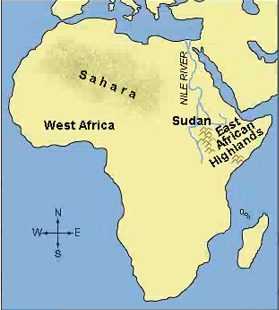题目解析:
【题目翻译】从公元前3300年左右关于东非高地牧民的第2段中可以推断出以下哪一个?
A他们住在群山周围,很少下到平原去。
B他们在干燥月份依赖的食物来源不同于潮湿月份。
C他们的定居点比西非和苏丹的牧民要大。
D他们在潮湿的月份从附近的狩猎-采集社区获得食物。
【判定题型】:根据题干中出现的关键词“imply”/“infer”/“suggest”等其他表示推断的词,判定本题为推理题。
【关键词定位】根据题干中的关键年份“3300 B.C.”可以直接定位到这句话“The highlands were inhabited by hunter-gatherers living around mountains near the plains until about 3300 B.C., when the first cattle herders appeared.”
【逻辑分析】直到大约公元前3300年,第一批牧牛人出现时,高地上居住着狩猎采集者,他们居住在平原附近的山区。最后一句话也是在描述游牧民族到达高地后的生活模式:在旱季和雨季,这些放牧人可能在固定的定居点之间移动,在旱季他们过着打猎的生活,在雨季靠畜牧和种植为生。
【选项分析】
A选项:他们住在山的附近,很少到平原去。这句话是描述说高地上原来居住的那些“hunter-gatherers”,不是在描述pastoral people,而且文中也没有说这些“hunter-gatherers”很少来到平原上。故A选项直接排除。
B选项:他们在旱季的食物来源要比在雨季的食物来源更丰富。我们可以从文中最后一句话推理出B选项是正确的。最后一句说:这些游牧民族在旱季过着打猎的生活,在雨季靠畜牧和种植为生。打猎获得的食物肯定更丰富,而靠畜牧和种植,食物来源相对比较单一,故B选项正确。
C选项:他们的定居点要比西非和苏丹的游牧民族大。文中没有提到定居点规模大小的信息,故C选项排除。
D选项:在雨季,他们从附近的依靠采集狩猎卫生的原住民那边获得食物。文中未提到该信息,故排除。


 At the end of the Pleistocene (around 10,000 B.C.), the technologies of food production may have already been employed on the fringes of the rain forests of western and central Africa, where the common use of such root plants as the African yam led people to recognize the advantages of growing their own food. The yam can easily be resprouted if the top is replanted. This primitive form of "vegeculture" (cultivation of root and tree crops) may have been the economic tradition onto which the cultivation of summer rainfall cereal crops was grafted as it came into use south of the grassland areas on the Sahara's southern borders.
At the end of the Pleistocene (around 10,000 B.C.), the technologies of food production may have already been employed on the fringes of the rain forests of western and central Africa, where the common use of such root plants as the African yam led people to recognize the advantages of growing their own food. The yam can easily be resprouted if the top is replanted. This primitive form of "vegeculture" (cultivation of root and tree crops) may have been the economic tradition onto which the cultivation of summer rainfall cereal crops was grafted as it came into use south of the grassland areas on the Sahara's southern borders.